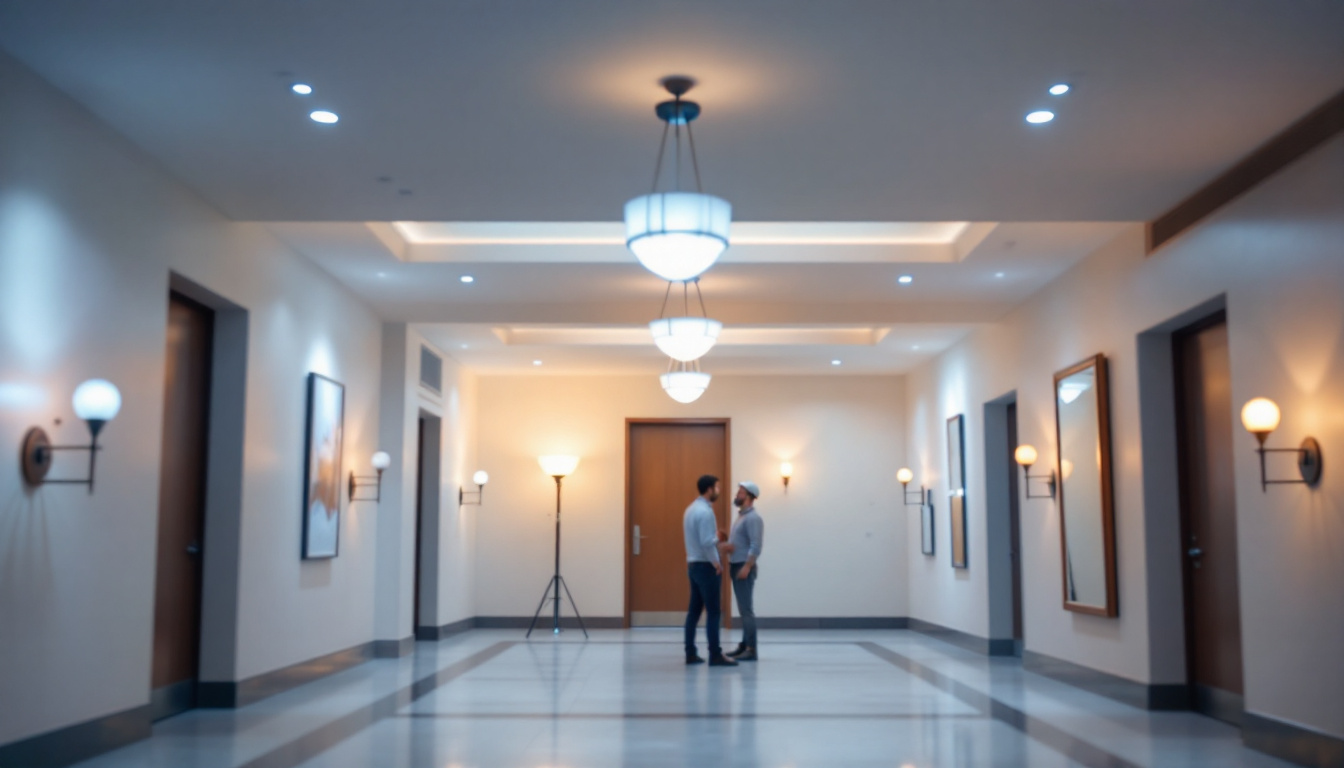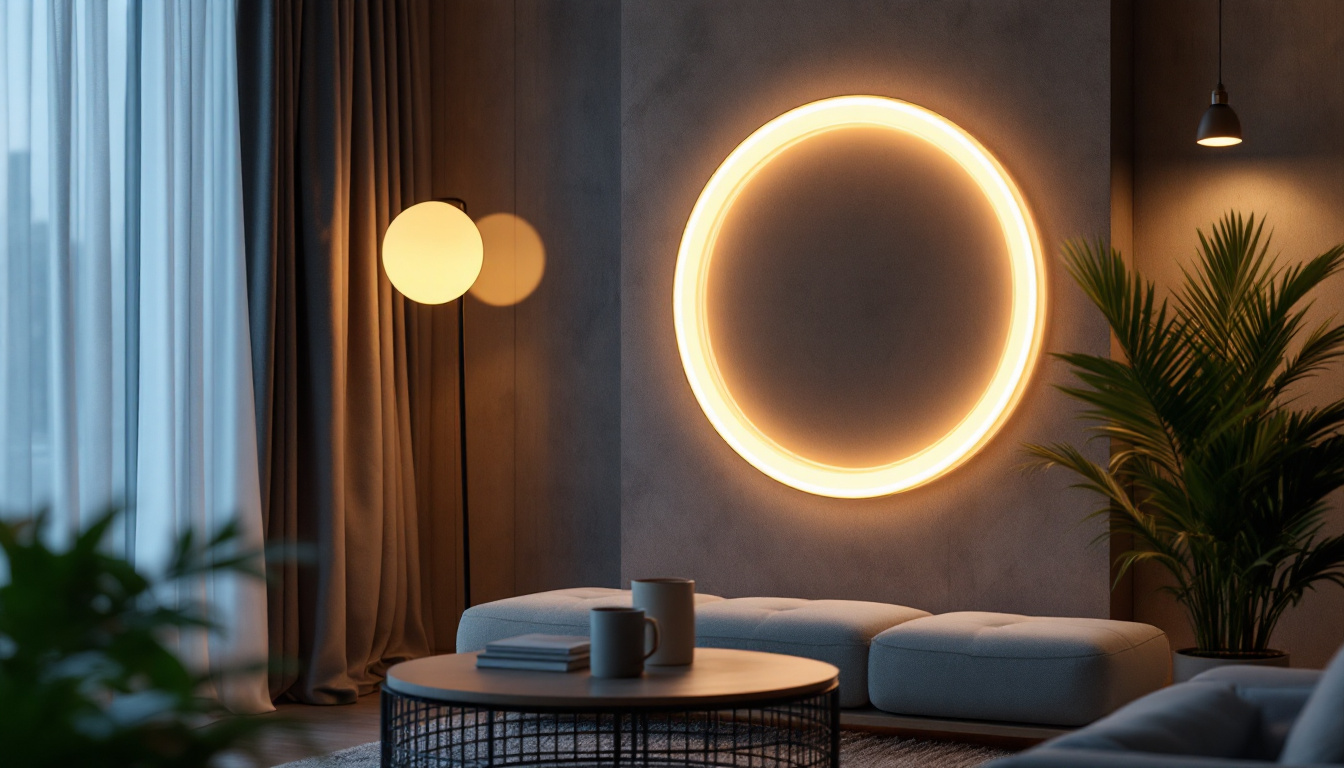

In the realm of interior design and architecture, hall lights play a crucial role in enhancing both functionality and aesthetics. For lighting contractors, understanding the nuances of hall lighting is essential to delivering quality installations that meet client expectations. This article delves into the various aspects of hall lights, including types, design considerations, installation tips, and energy efficiency.
Hall lighting serves not only to illuminate the space but also to create an inviting atmosphere. It is typically used in corridors, entryways, and other transitional areas within a building. The right choice of lighting can significantly impact the overall look and feel of a space. Properly designed hall lighting can also enhance safety by ensuring that pathways are well-lit, reducing the risk of accidents in dimly lit areas.
There are several types of hall lights available, each with its unique characteristics and applications. Understanding these options enables contractors to recommend the best solutions to their clients. Each type of lighting can be used to achieve different effects, whether it’s for functionality, aesthetics, or both.
When selecting hall lights, several design considerations should be taken into account. The goal is to create a well-lit environment that complements the overall design of the space. Thoughtful lighting design not only enhances aesthetics but also improves the functionality of the area.
Proper installation is key to achieving the desired lighting effects in hallways. Lighting contractors must be familiar with best practices to ensure safety and efficiency.
Before any installation begins, a thorough understanding of the electrical layout is essential. This includes identifying existing wiring and determining the best locations for new fixtures.
Contractors should ensure that all wiring complies with local codes and regulations. It is advisable to use a circuit that can handle the load of the new lighting fixtures, especially when installing multiple lights in a hallway.
Additionally, it’s important to consider the type of switch that will control the lights. Dimmer switches can be a great addition, providing flexibility in lighting levels and enhancing the ambiance of the hallway. However, it’s crucial to ensure that the dimmer is compatible with the type of bulbs being used, particularly with LED fixtures, to avoid any potential issues with performance.
Choosing the right fixtures is crucial for both aesthetics and functionality. Contractors should consider the size and scale of the fixtures in relation to the hallway dimensions.
Additionally, compatibility with existing electrical systems should be assessed. For instance, if LED fixtures are being installed, the circuit should be compatible with LED technology to avoid issues such as flickering or reduced lifespan.
Moreover, the style of the fixtures should complement the overall design of the hallway. Whether opting for modern, minimalist designs or more traditional styles, the choice of materials and finishes can significantly impact the visual appeal. It’s also wise to consider energy-efficient options that not only reduce electricity costs but also contribute to a more sustainable environment.
Safety is paramount during any lighting installation. Contractors should always turn off the power at the circuit breaker before beginning work. Using insulated tools and wearing personal protective equipment can further enhance safety during the installation process.
Furthermore, ensuring that all fixtures are securely mounted and that there are no exposed wires will help prevent accidents and ensure longevity of the installation.
In addition to these precautions, it’s beneficial to conduct a final inspection after the installation is complete. This includes testing all fixtures to ensure they function correctly and checking for any potential hazards, such as loose connections or inadequate support. By taking these extra steps, contractors can ensure a safe and successful installation that meets both aesthetic and functional needs.
With growing concerns about energy consumption and sustainability, lighting contractors must prioritize energy-efficient solutions in their projects. Hall lighting is no exception.
LED bulbs have revolutionized the lighting industry, offering significant energy savings compared to traditional incandescent bulbs. They consume less electricity and have a longer lifespan, making them a cost-effective choice for hall lighting.
When recommending bulbs, contractors should consider the brightness (measured in lumens) and the color temperature. This ensures that the chosen bulbs not only save energy but also provide the desired ambiance.
Smart lighting systems are becoming increasingly popular in residential and commercial settings. These systems allow for remote control, scheduling, and automation of lighting, contributing to energy savings.
Integrating smart technology into hall lighting can provide clients with greater control over their energy usage. For example, motion sensors can automatically turn lights on and off as people enter or exit the hallway, reducing unnecessary energy consumption.
Proper maintenance is essential for ensuring the longevity and efficiency of hall lighting systems. Contractors should advise clients on regular upkeep to prevent issues down the line.
Dust and dirt can accumulate on light fixtures, reducing their effectiveness. Regular cleaning of fixtures not only enhances their appearance but also ensures optimal light output.
Additionally, periodic inspections of the wiring and fixtures can help identify potential issues before they become major problems. This proactive approach can save clients time and money in the long run.
Even energy-efficient bulbs will eventually need replacement. Contractors should educate clients on the signs that indicate a bulb is nearing the end of its life, such as flickering or dimming.
In some cases, entire fixtures may need to be replaced due to wear and tear. Providing clients with information on how to choose replacement fixtures can empower them to make informed decisions.
The world of lighting design is constantly evolving, and staying updated on trends can help contractors provide cutting-edge solutions to their clients. Here are some current trends in hall lighting design.
Minimalism continues to be a popular trend in interior design. Simple, clean lines and unobtrusive fixtures are favored in hall lighting. Recessed lights and flush mounts are often chosen for their ability to blend seamlessly into the architecture.
This trend emphasizes the importance of functionality while maintaining a sleek aesthetic. Contractors should be prepared to offer minimalist options that meet this demand.
Layered lighting involves combining different types of lighting to create a dynamic and versatile environment. In hallways, this might include a mix of ambient, task, and accent lighting.
Contractors can recommend a combination of recessed lights, wall sconces, and pendant fixtures to achieve a well-balanced lighting scheme. This approach not only enhances the visual appeal but also improves functionality.
While minimalism is on the rise, bold and statement-making fixtures are also gaining popularity. Unique designs and eye-catching materials can serve as focal points in hallways.
Contractors should stay informed about the latest designs and materials to offer clients options that reflect their personal style and enhance the overall design of their space.
Hall lights are an integral aspect of interior lighting design, and understanding their various elements is essential for lighting contractors. From selecting the right fixtures to ensuring energy efficiency and maintenance, every detail contributes to the overall success of a lighting project.
By staying informed about trends and best practices, contractors can provide exceptional service to their clients, ensuring that hall lighting not only meets functional needs but also enhances the beauty of the space. The role of a lighting contractor is pivotal in transforming ordinary hallways into extraordinary experiences through thoughtful lighting design.
Ready to elevate your hall lighting projects with the finest selection of spec-grade lighting products? Look no further than LumenWholesale, where we offer contractors an unbeatable combination of quality, affordability, and convenience. Say goodbye to local distributor markups and hello to top-quality lighting at wholesale prices, complete with the ease of bulk buying and the benefit of free shipping. Don’t compromise on your lighting needs—choose LumenWholesale for reliable, high-performance lighting that transforms any space. Wholesale Lighting at the Best Value is just a click away.

Discover the pivotal role sensor lights play in modern lighting projects and why they are essential for contractors.

Discover the hidden pitfalls of purchasing electrical supplies and mounting kits in bulk from local distributors.

Discover expert insights on selecting the best LED bulbs for home installations, tailored specifically for lighting contractors.

Discover the critical aspects of circle LED lights that often escape the attention of lighting contractors.
Get notified when NEW deals are released.
Optimize your budget with wholesale discounts.
Only top-quality, specification-grade lighting products.
No additional costs at checkout - what you see is what you pay.
We understand the unique needs of contractors.